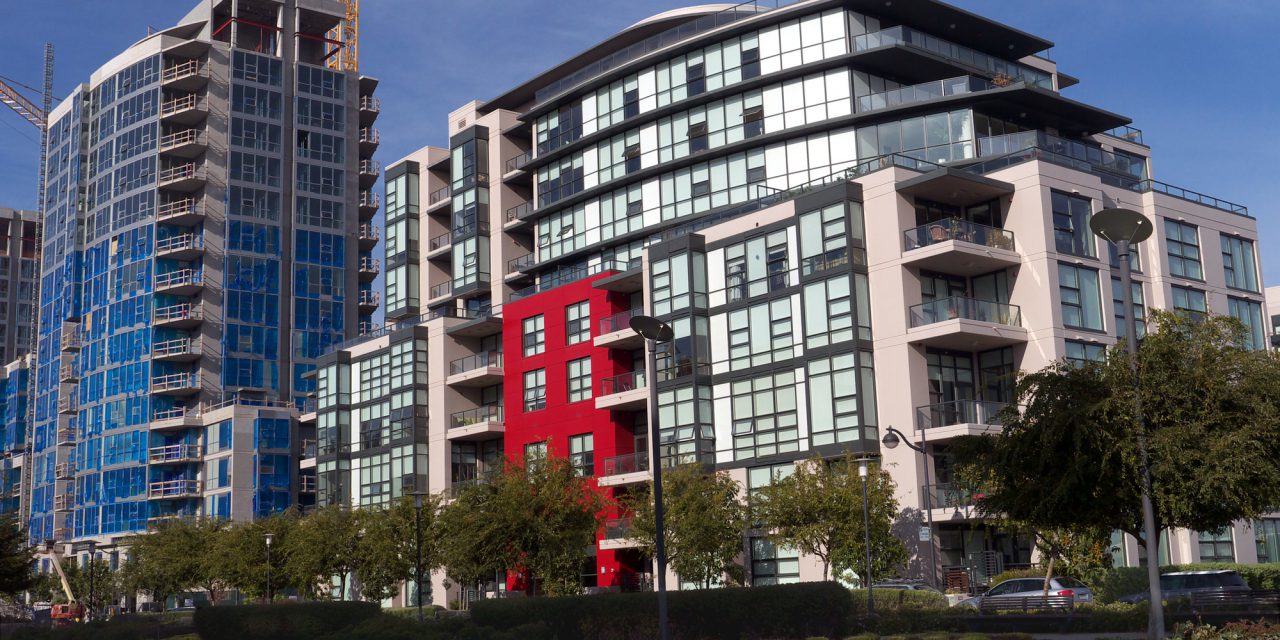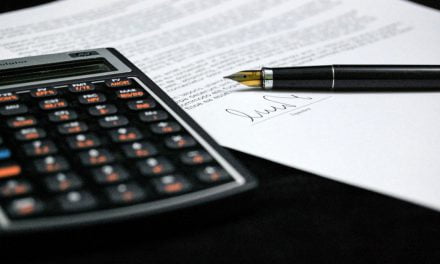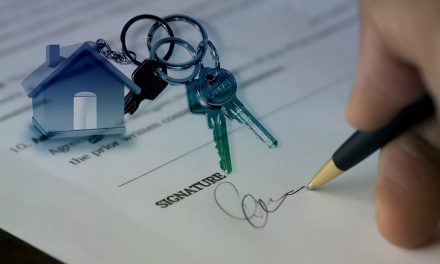The capitalization (cap) rate is a handy tool used by income property brokers and agents. With it, they determine a property’s:
- yield, as a rate of return based on the asking price sought by the seller; and
- pricing, based on yields sought by buyers as a rate of return.
But how does the cap rate work, and how do agents use it when assisting income property clients? Read on to learn how to understand and use cap rates.
What does the cap rate measure?
Initially when a seller’s agent markets an income property for sale, the cap rate is presented as the yield from rental operations, in relation to the seller’s asking price.
Here, yield needs to be distinguished from profit. Both are stated as percentage figures and represent a return on invested capital, typically the price paid for a property.
A yield is the annual measure of net income generated by the operation of a rental property (residential or nonresidential). Also, it can be said that the yield a rental property produces is the property’s annual net operating income (NOI).
Profit, on the other hand, is the measure of gain realized on the sale of property over the period of ownership. Taxwise, profit is classified as a capital gain. It is calculated on a sale as the difference between the sales price and the price paid to acquire and improve the property, minus carrying and transaction costs. (Depreciation recapture is ordinary income, discussed below.)
Further, profit is a one-time event, taken on the sale of a capital asset. Conversely, yield is the continuing receipt of net operating income (passive or portfolio) during each year of ownership of a rental property.
Sellers and buyers use cap rates differently
As indicated above, the cap rate has two fundamental applications in income property sales:
- for the seller, it is the annual percentage yield the property’s NOI represents of their asking price; and it is a percentage of the asking price represented by the annual yield, or NOI;
- for the buyer, it is the annual percentage yield sought by the buyer and applied to the property’s NOI to set the purchase price.
A buyer analyzes a property’s worth using a cap rate pre-established by the buyer based on the long-term outlook for the particular property. The cap rate the buyer establishes is applied to the property’s NOI to calculate the property’s present value. Thus, the buyer sets the maximum price to be paid to acquire the property based on the NOI, which needs to be confirmed by a due diligence investigation of rents and expenses.
As you see, the buyer and seller hold divergent views on the cap rate. For a seller, the lower the cap rate the better, as a low cap rate means a higher selling price (and greater profit). For a buyer, the higher the cap rate the better, as this means a lower purchase price (and greater yield). The seller’s cap rate is not the same as the buyer’s rate, when negotiations commence.
When searching for income property to acquire, it is the buyer who makes the initial offer. Thus it is the buyer who needs to determine a cap rate sufficient for each property under consideration. The rate for each property differs depending on the condition of the property improvements. Settling on a cap rate without considering the conditions of improvements is financially unsound — unless the property’s land value is greater than the capitalized value of the income generated by the property’s now obsolete improvements.
How does the buyer discern their cap rate?
Just what is the value of a property, and further, what is the maximum price a buyer will pay to own it? This is the puzzle every buyer is confronted with when exposed to an income property. To resolve the puzzle, the buyer first needs data on the property’s:
- gross operating income (GOI), equal to the annual rent amounts presently received from the property’s tenants and the scheduled rent amounts for vacant units after a vacancy factor reduction* (consider local demographic trends of population density and personal income as they influence future rental income);
- operating expenses, including taxes, insurance, maintenance, repairs/replacements and all other management costs –information which helps anticipate operating expenses includes the age, quality and care of the structure and components);and
- the capitalization rate the buyer devises as appropriate to evaluate property of its type and condition. [See first tuesday Form 352]
*To calculate the vacancy factor reduction, start by obtaining the property’s vacancy rate for the past year. If this is made unavailable, use an average for the area and property type. For example, if a property has 50 units and an average of five units were vacant each month during the past year, this property has a vacancy rate of 10%. Thus, include a figure of 10% in lost rents to set the anticipated GOI.
The first two factors allow you to find the property’s net operating income (NOI). To do this, use the formula:
GOI – operating expenses = NOI
For instance, a new 10-unit residential rental property produces an annual bankable GOI of $120,000. The annual operating expenses likely to be experienced during the first year of ownership are $30,000. Therefore, the NOI is $90,000.
The NOI constitutes:
- a return of capital invested to purchase and improve the property (also called recovery of invested capital which is allocated to improvements and reserves); and
- a return on capital invested (the taxable yield).
Mortgage interest and depreciation deductions and income taxes are separate issues for the owner, not a burden of the property.
On the buyer’s initial exposure to the property and its operating data – while ignoring the asking price and cap rate provided by the seller’s agent – the buyer next determines the rate of return (cap rate) acceptable to own this property. Only when the buyer sets a sufficient cap rate – based on the observed nature and condition of the property and its location – can the maximum price they will pay to acquire the property be calculated (and then only if they have a verifiable NOI).
To calculate the purchase price the buyer will pay, use the formula:
NOI / cap rate = purchase price
On the obverse side, the seller does not use a cap rate to set the asking price. The seller’s thinking is to first set the price based on the amount they want for the property. It then becomes the task of the seller’s agent to extrapolate a cap rate for inclusion in their property’s marketing package. The seller’s marketing package is the first point of influence sellers have on buyers, before buyers set their own cap rate. The formula the seller’s agent uses is:
NOI / asking price = cap rate
Here, the NOI is $90,000. The seller’s agent first introduces the cap rate concept of evaluation when marketing the property. In this case, the listing price the seller is asking is $1.3 million. With the price set by the seller and a reliable NOI known by the seller’s agent, mathematically $90,000 / $1,300,000 is 0.069. Expressed as a percentage (multiplied by 100), the cap rate is 6.9%.
What does a cap rate represent?
Further, how does the buyer determine an acceptable cap rate?
The answer is always relative. An acceptable cap rate varies from property to property, location to location, buyer to buyer, year to year and even month to month in some periods of economic distress. In a mortgage market where forward, long-term interest rates will be higher, cap rates need to reflect these expectations.
If not, the price paid set using a cap rate based on today’s artificially low interest rates (reflecting low inflation and low real margins) will in real terms produce a loss for the buyer on a resale during the next two decades. Cap rates will rise as they track increases in both mortgage rates and the demand for money when economic expansion begins and we escape from the present zero lower bound interest rate trap.
These market conditions will be experienced beginning in 2015 for the next two to three decades, as 2012 was the zero-rate midpoint trough of a roughly 60-year interest rate cycle.
Buyers and their agents need to contrast the coming years’ interest and cap rates with the current rates. Since the 2008 recession and financial crisis, interest rates have been at all-time lows, essentially zero as influenced by the lower bound rate. Very low cap rates for income property evaluation seem acceptable to impatient and inexperienced cash-heavy, interest-earning individuals with few investment opportunities.
Further, the cap rate does not reflect every aspect an investor needs to consider when setting the maximum price they will pay. For instance, the cap rate formula does not account for:
- required renovation and rehabilitation of the property (which requires additional capital beyond the purchase price to eliminate the obsolescence);
- the cost of hiring a property manager and of other services needed to operate the property;
- a mortgage with an interest rate exceeding the combined rate of inflation and real return on investment used to set the cap rate; and
- a final/balloon payment in a mortgage.
A buyer purchasing a property subject to an existing mortgage or funded by a new mortgage needs to set the cap rate higher than the interest rate on the mortgage to justify the risk of loss. This spread covers items such as recovery of the investment or reserves for replacement, and risks presented by changes in demographic demands.
Editor’s note — Any adjustable rate mortgage (ARM) or due-date financing presents a particularly troublesome risk of loss due solely to future increases in interest rates.
Further, the source of funds for payment of the mortgage is the property’s NOI. The buyer’s earnings after interest payments are to represent a much higher yield on their leveraged equity investment (cash) to offset the risk of being subordinate to the mortgage debt.
How does a buyer use the cap rate to set their desired purchase price?
The setting of a cap rate for a property is imperative if the buyer is to independently determine the purchase price they will pay. On the flip side, sellers have little concern for the cap rate (beyond marketing purposes), typically setting their asking price for their property based on their desired profit (or their money illusions). It is the seller’s agent who then is left to tweak the gross operating income and expenses to arrive at an NOI that, when related to the asking price, produces a marketable cap rate.
On the other hand, the practical, forward-looking buyer prudently considers making an offer to buy a property at a price that reflects the cap rate they apply to this type of property and its condition. Thus, a cap rate analysis by a buyer comprises:
- a percentage annual real return on investment (ROI) the buyer is willing to accept, (say 3%-4%) on a long-term investment with no risk of loss on invested capital, sometimes called a margin or profit margin;
- the annual anticipated rate of consumer inflation expected over the life of the investment (say 2%) needed to retain purchasing power;
- a percentage annual recovery of invested capital or reserve for replacement of structural components, the annual return of the original investment allocated to improvements (say 2%, a 40-year recovery on 75% of investment), comparable to income tax deductions from NOI for recovery of capital before income remaining is subjected to tax; and
- a percentage annual premium (say 0%-3%) for the risk of loss due to physical obsolescence of the structure resulting from age, negative demographics of personal income and population density (economic obsolescence), destruction of improvements due to uninsured casualty losses and other like risks unique to each property.
What are tomorrow’s cap rates?
Today’s cap rates are low in comparison to what they will become in the near future. We say this with such assuredness because mortgage rates will rise. These mortgage rates contain a real rate of return and an expected inflation rate, like those which are part of the cap rate for real estate investments.
Mortgage rates vary slightly from day to day, but today, they are just above the trough and headed into a roughly 30-year half cycle. Rates tend to rise for 30 years, peak and then decline for 30 years. Presently, we are at the bottom of a rate cycle, rates having declined since the most recent peak in the ‘80s. Mortgage rates started to rise mid-2013, and will advance again, likely by mid-2015. Short-terms rates directly controlled by the Federal Reserve will start to rise in 2015. Both long- and short-term rates are expected to rise over the next two-to-three decades.
As interest rates go, so goes the cap rate. Thus, tomorrow’s cap rates will rise as interest rates increase, both containing a real rate of return and an inflation rate.
How can I weigh risk in the cap rate?
As is the case with any investment, purchasing income property includes an amount of risk that some or all the capital (cash and borrowed funds) will be lost. Thus, the prudent investor asks: how do you include this risk (called a risk premium) in the cap rate, in addition to the real rate of return and the inflation rate?
There are two types of risk to consider when determining the risk premium rate to be included in cap rates:
- risks inherent in the property (the primary category of risk); and
- risks due to human and other exterior activity (the secondary category of risk).
The primary category of risk considers the physical improvements on the property, including their deterioration and declining usefulness through aging, called physical obsolescence. Also labeled depreciation for accounting, it provides for a return of capital or capital recovery over the remaining economic life of the improvements before the land value exceeds the value of the property’s income, called economic obsolescence.
Depreciation is both an investment fundamental and a tax deduction. It is an annual allowance for the property’s “exhaustion, wear and tear and obsolescence,” according to the Internal Revenue Service (IRS). For investors, it reserves annually a portion of the NOI classified as a return of capital allocated to improvements. (At the same time, improvements made to property as excessive maintenance expenses often increase the property’s value by allowing the owner to charge more rents). [See first tuesday publication, Tax Benefits of Homeownership Chapter 9: Depreciation and unrecaptured gain]
The primary category of risk can be easily accounted for. However, the secondary category of risk is less tangible and therefore more difficult to translate into a percentage figure to develop the cap rate. Nonetheless, the primary and secondary categories of risk combined establish the risk premium part of the cap rate.
The secondary category of risk includes the “human” and exterior influences on the property’s value. These risks include:
- the creditworthiness and level of employment diversity in current tenants;
- the coming expiration of current leases, which are preferably staggered;
- competition from nearby, similar property (existing or future construction);
- a history of crime committed on or near the property;
- long-term demographic changes in the area surrounding the property; and
- changes in zoning, retrofitting, habitability and fire ordinances or regulations. [See first tuesday Form 185 Letter of Intent: Prospective Buyer’s Proposal for Due Diligence Investigations]
An example of demographic change can be seen in the changing attitudes about suburban versus urban living. Whereas the wide lawns and McMansions of suburban living used to call families by the droves, the amenities and jobs located in cities have caused a shift in housing preference among the next generation of first-time homebuyers, Generation Y. Thus, where a suburban income property earned high rents in the past, over the next decade rents are expected to decrease as demand of more skilled employees transfers to urban areas. Further, a decrease in demand reduces property values.
Zoning changes can also positively (or negatively) affect a property’s rents, and in turn value.
Property values increase at the rate of consumer inflation if the local economy (including jobs, income and demographic demand) moves at a steady pace. However, from year to year, this is rarely the case.
As California’s population increases each year and neighborhoods (particularly urban ones) become denser, property values will likewise increase. Along with a 2% rise in inflation, the added population density factor can add an additional 1.5% to value. This is a total annual rise of 3.5% in property values, equal to the mean price trendline, to which property prices are magnetically pulled.
How do cap rates affect REIT investors?
Investors in real estate investment trusts (REITs) also need to keep an eye on cap and interest rates.
Looking forward, REIT investors need to be concerned about present highs in stock market and real estate prices. When short-term interest rates begin to permanently rise, likely by 2015, REIT property values and share prices are to fall.
Meanwhile, REIT revenues are to hold steady since rent increases are part of consumer inflation. Rents move with demand for shelter and changes in personal income levels, without concern for property values or cap rates.















do you know what the cap rate range is for a solar farm lease?
Great articule, thank you per the explanation clear in cap rates.
Excellent explanation of cap rates. Thank you.
I am, an active for 50 years, commercial real estate broker .
Excellent treatise on cap rates. As a real property attorney and commercial landlord, I appreciate the clarity and precision of your writing. I’ve sent a copy of the link to my partners in one of my commercial properties.